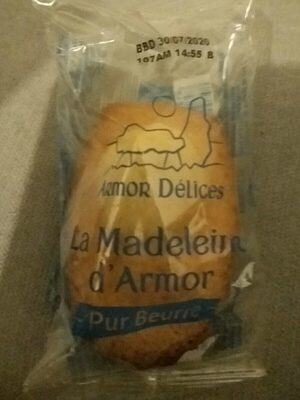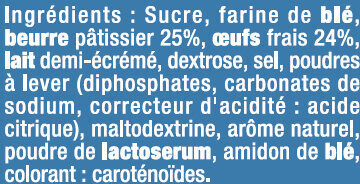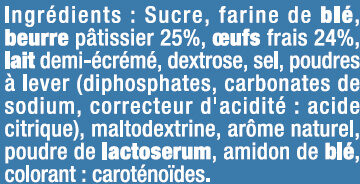La madeleine d'Armor pur beurre - Armor Délices - 2
This product page is not complete. You can help to complete it by editing it and adding more data from the photos we have, or by taking more photos using the app for Android or iPhone/iPad. Thank you!
×
Barcode: 3368390000848 (EAN / EAN-13)
Quantity: 2
Packaging: Plastic, Bag, fr:x12
Brands: Armor Délices
Categories: Snacks, Desserts, Sweet snacks, Biscuits and cakes, Cakes, Madeleines
Labels, certifications, awards: Made in France, Produced in Brittany, Pure butter
Manufacturing or processing places: Bretagne, France, Saint Agathon
Countries where sold: France
Matching with your preferences
Environment
Carbon footprint
Packaging
Transportation
Report a problem
Data sources
Product added on by openfoodfacts-contributors
Last edit of product page on by kiliweb.
Product page also edited by beniben, gdm, julie-yuka, nouky20, off.baa834d277ca9eb36d6abd12591b697, packbot, quechoisir, quentinbrd, segundo, tacite, tacite-mass-editor, yuka.K65tJ-CML_QdGMqOi7gu2TG7FMjME691MnAjow, yuka.UWJzbERLRWJvL2dtb2ZJZ3pETEZ5LzVYOTVXbmZFVzJLdGNBSVE9PQ, yuka.WS9sWkRZVU5oK0FJaGZjZDV6ak4vb2xlMjYveWQwRHBLTU5MSVE9PQ, yuka.ZUlZdEM1NGFvT2tzeE5wa3dUNzB5TU5sM0w2MldXcUpMY0VNSWc9PQ, yuka.sY2b0xO6T85zoF3NwEKvlhdDTd_Agz6bL03txmDW4o6hDa7kXu1zyZnRIqg, yuka.sY2b0xO6T85zoF3NwEKvlm1nVdvzpT_EFQfjtWGm6vecJLbKRYkt_9TADas.










